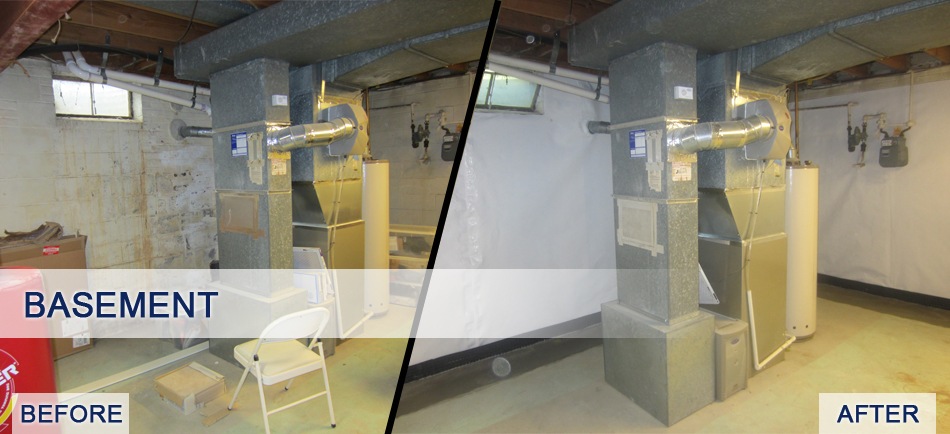- LIVE Response 8am-8pm | Saturdays 9am-5pm
- Get Financing - APPLY NOW!
- HQ: (571) 350-8292
- Maryland: (301) 841-6761
- NOrthern Virginia: (703) 721-7148
Are you curious about how your home’s foundation drainage keeps it dry? You’ve arrived at the correct location! Follow along as we go through several drainage options that will work for you. To prevent water intrusion, you can use one of the options below or a combination of them.
What is the Process of Foundation Drainage?
As water collects around your foundation, pressure builds up, pushing against your walls and perhaps causing damage. The water is collected via foundation drainage and carried to a sump pit. When water enters the sump pit and reaches a designated level, it activates the sump pump. This then pumps the water out of your house via discharge lines.
There are two basic aims for foundation drainage. The first is to keep water out of your basement or crawl space, and the second is to avoid foundation problems caused by hydrostatic pressure.
What Are the Causes of Drainage Issues?
The following are some of the most typical causes of drainage problems.
Grading – Grading is similar to shaping your property so that everything flows smoothly. After heavy rains, water might pool in flat sections of your yard. Grading acts like a slide, directing water away from your property. If the grading in your neighbor’s yard is poor, their water may become an issue for you by traveling to your yard!
Soil – The kind of soil around your foundation affects how water interacts with it. Clay-rich soil, for example, has a difficult time draining water uniformly.
Gutters – Gutters direct water away from your roof and away from the sides. Gutters that are clogged lose their efficiency.
Downspouts – Water is carried from your gutters to your yard via downspouts. You don’t want water to fall at the foot of your foundation from a downspout.
Driveway – Your driveway should be slanted away from your house’s foundation. A driveway should not ascend more than 15 feet over a distance of 100 feet as a general rule, for example.
How Do Sump Pumps Help With Foundation Drainage?
Both drain tile systems lead to a sump pit, where water is pumped out of your home by a sump pump. Sump pumps are typically installed in homes built in locations with a high water table.
What Are Sump Pumps and How Do They Work?
When your sump pit begins to fill with water, your sump pump activates. One of two approaches is used to activate sump pumps:
A pressure sensor – When the water pressure in your sump pit reaches a specific level, a pressure sensor sends a signal to your pump.
The float activator arm – Inside the sump pit, a buoyant ball floats on the water’s surface. The ball starts the sump pump when the water level reaches a specified level.
The Bottom Line
To prevent soil from entering the drainpipe, it is frequently covered with a permeable mesh or sock. It’s then coated with gravel for a few feet. According to the IRC, the drain pipe must be supported by at least 2 inches of washed gravel or broken rock. The gravel should also extend at least a foot beyond the footing’s outside border and at least six inches above it.
After that, filter cloth is placed over the stones, and the trench is ultimately backfilled with earth. Lastly, the backfill may be compressed. Backfilling and compacting should be done after the basement floor or slab is in place to avoid foundation fractures. The IRC also mandates that the first 10 feet away from the house be graded to a minimum slope of 6 inches.
If you know the reasons for maintaining the foundation drainage for keeping your home dry, then you should follow the aforementioned rules. It is also crucial to keep your home’s drainage system in good working order.
To learn more about how you can take control back over your home and get things working again, give Basement Masters Waterproofing a call at (571) 371-0675 today!

Take A Look For Yourself!
Visit our Before and After gallery for shots of completed projects.We are glad to help increase the quality of life in your home!